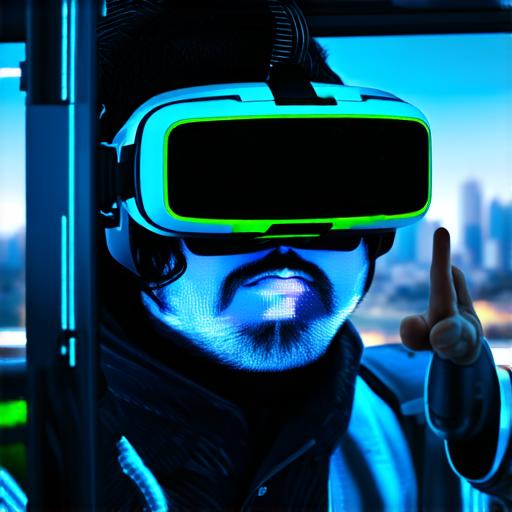What is Virtual Reality?
Virtual reality is a computer-generated simulation that immerses users in a digital environment. It uses a headset or display device to create an artificial world that appears to be real and can be interacted with using hand or body controllers. The goal of VR is to provide users with a fully immersive experience that engages their senses and creates a sense of presence in the virtual world.

Key Features of Virtual Reality
There are several key features that define virtual reality:
- Immersive environment: VR provides a fully immersive environment that engages all of the user’s senses. This includes visual, auditory, and haptic feedback, which creates a sense of presence in the virtual world.
- Interactivity: VR experiences are designed to be interactive, allowing users to explore and interact with the virtual environment using hand or body controllers.
- Perspective: VR provides a unique perspective that allows users to see and experience things from a different point of view. This can be particularly useful in fields such as architecture, where users can visualize a project from a variety of angles.
- Realism: VR experiences are designed to be as realistic as possible, with high-quality graphics and sound effects that create a sense of immersion.
- Customization: VR experiences can be customized to meet the needs of specific industries or use cases. This allows developers to create experiences that are tailored to the needs of their users.
Types of Virtual Reality Systems
There are several different types of virtual reality systems available, including:
- Head-mounted displays (HMDs): HMDs are the most common type of VR system and provide a fully immersive experience using a headset or display device.
- Room-scale systems: Room-scale systems require a dedicated space to create a fully immersive environment, with tracking sensors that track the user’s movement within the space.
- Handheld systems: Handheld systems allow users to interact with virtual environments using handheld controllers and can be used in a variety of settings, including at home or on-the-go.
- Augmented reality (AR) systems: AR systems provide a digital overlay on top of the real world, allowing users to interact with virtual objects in their physical environment.
Case Studies in Virtual Reality Development
One example of successful VR development is the use of VR for training and simulation in industries such as aviation, military, and healthcare. For example, pilots can use VR simulations to practice flying in a safe and controlled environment, while medical professionals can use VR to simulate surgeries and other procedures.
Another example is the use of VR in gaming and entertainment. Games such as Beat Saber and Half-Life: Alyx have become popular among gamers and showcase the potential of VR for creating immersive and engaging gaming experiences.
Expert Opinions on Virtual Reality
According to Dr. Richard Nisbet, a virtual reality researcher at the University of California, Santa Barbara, “Virtual reality has the potential to revolutionize the way we learn, work, and interact with each other.” He also notes that VR can be particularly useful in industries such as architecture, where users can visualize projects from a variety of angles.
A report by MarketsandMarkets estimates that the global virtual reality market is expected to grow at a compound annual growth rate (CAGR) of 41.9% between 2021 and 2028, reaching $72.6 billion by 2028. The report also notes that VR has the potential to transform industries such as healthcare, education, and entertainment.
Conclusion
Virtual reality is a rapidly growing technology that offers developers new ways to create immersive experiences for users. Understanding the definition of VR and its key features is essential for developers who want to create effective and engaging VR experiences. With different types of VR systems available, developers have a range of options for creating immersive environments that engage their users’ senses and provide a fully immersive experience. As VR continues to evolve, it’s likely that we will see even more innovative uses of this technology in the future.
